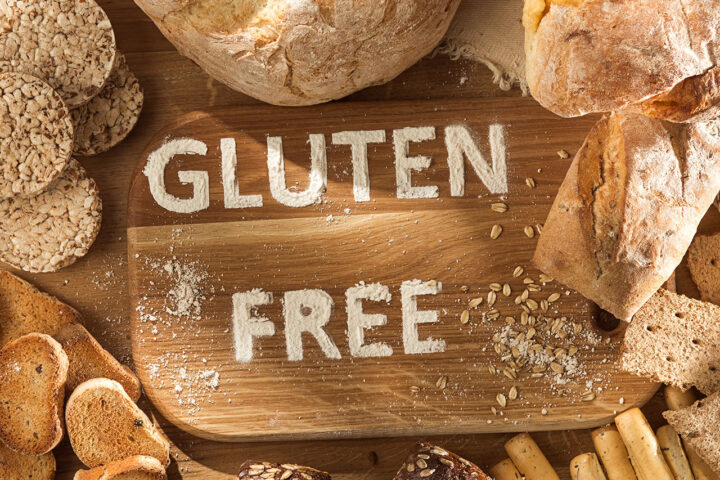Eating Gluten Free Heals the Body
Diseases that have as a component inflammation, such as arthritis, psoriasis, gastrointestinal issues, resistant weight loss/ metabolic syndrome, obesity, neurological disorders, autism, epilepsy, and thyroid disorders, all seem to have in common improvement when a diet free of gluten is adopted.
Although gluten free foods and diets are being touted in magazines and on TV, many people do not know what gluten is and how to locate it in foods. Once identified, it is easy to eat a no gluten diet. It takes some initial adjusting because as you will see, the typical “healthy diet” being recommended by health care professionals and health care organizations, all recommend unwittingly, a large daily intake of gluten based food products.
Also, many of our habitual foods that we have come to love, i.e., bagels, pizza, wraps, breads, pasta, pretzels, and cereal, all have wheat as their base. If you are curious if a diet free of gluten can help you, try it. It cannot hurt you at all. In fact, you may find you feel better, less achey, improved bowel regularity, less gassy, an drop a few pounds while you are at it.
What is Gluten?
Gluten is the protein found in these four grain products: Wheat, Barley, Rye, and Oats. The protein is called gluten and another related wheat protein is called gliadin. Both of these need to be avoided to obtain gluten free status.
Why is Gluten So Bad?
Wheat and other gluten containing products are not what they used to be. Today, due to farming and manufacturing practices, the gluten being produced has a higher gluten concentration compared to the gluten content of grains 100 years ago. Higher gluten content means spongier breads, higher protein content of pasta, and a more desirable product for food manufacturers to produce their goods. Not so good for those recognizing their sensitivity to gluten. For those that can tolerate wheat and gluten, you are lucky!
Gluten Sensitive-Not Celiac Disease-No Genes required!
Recently, researcher Dr. Alexandro Fassano, has recognized a condition called “gluten sensitive” without the person having the gene that identifies gluten allergy and Celiac disease. Both conditions, require a gluten free approach.
Substituting Foods — A good place to start:
Bread, crackers, wraps, cereals, cookies, oatmeal, pasta, bagels, all come in gluten free forms. Supermarkets and whole foods carry a large array of gluten free products. Not all gluten free products are high fiber or low calorie. They simply do not have the Gluten and Gliadin proteins.
General Daily Nutrition Tips: Gluten or No Gluten to Help your Diet
- Cook up extra vegetables at dinner or on a weekend so you can increase your total vegetable intake to 1-2 cups or more daily.
- Include 1-3 fruits daily. Apples, berries, oranges are great.
- Drink water, green tea more than soda, coffee, or specialty waters- 8-10 cups daily.
- Eat fish and less beef- 3-5 ounce portions.
- Include 1/2 to 1 cup of beans 3 x/week or more. Add them to salads, soups, or make into bean salads.
- Switch to whole grains- brown rice, quinoa, and millet- all gluten free.
Thanks for reading and staying interested in your health. We will be moving to a more robust newsletter so stay tuned. It will be coming to your email box in the next week.

Leave a Reply